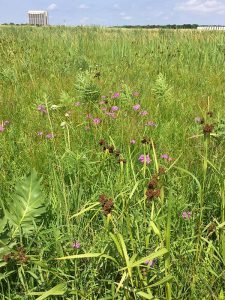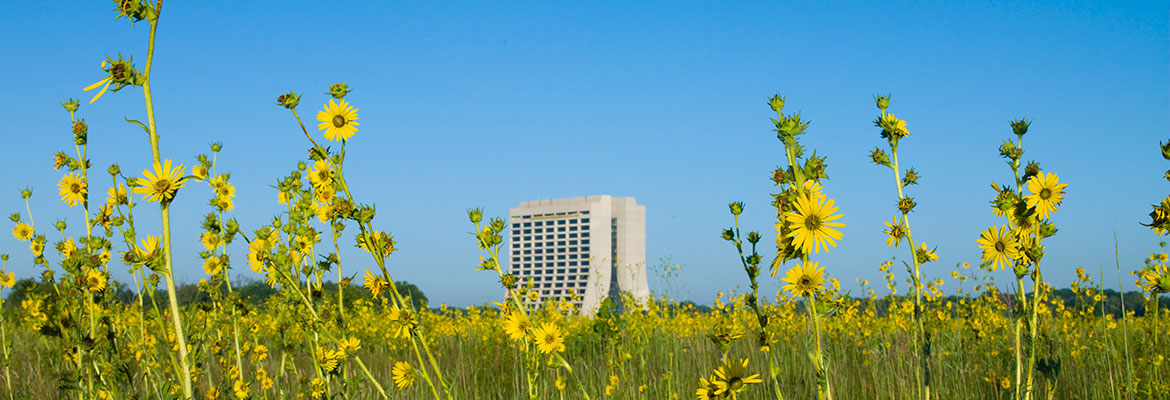Measures of biodiversity are useful in assessing the overall productivity and integrity of interconnected biotic and abiotic components of ecosystems.

Fermilab fully supports the efforts to increase biodiversity across all habitats and community types. Pictured is a high-quality, wet-mesic prairie restoration on site. Photo credit: R. Campbell
Biodiversity is the diversity of life in a given area and a general indicator of overall ecological health. Biodiversity includes genetic, species, community and ecosystem diversity. The various methods of expressing the level of diversity — information measures such as the Shannon-Wiener or Simpson’s indices or species richness or evenness measures — generally get at the same thing. Measures of biodiversity are useful in assessing the overall productivity and integrity of interconnected biotic and abiotic components of ecosystems.
On the North American prairie in the 19th century, as pioneers broke through the prairie sod and replaced the highly diverse tallgrass community with row crops, the drop in biodiversity was devastating. As the number of plant species declined, the number of insects, birds and other consumers that depended on them declined as well. However, not all disturbance is detrimental. Intermediate levels of disturbance appear to provide the right balance for tolerant and intolerant species to coexist, maximizing biological diversity. Managing for that balance across habitat types and through time is a primary goal in ecological land management.
Considering only species diversity is not adequate. At least two additional kinds of diversity have implications for ecosystems. Genetic diversity within species is important to provide flexibility of species to adapt to particular habitats over long spans of time. Structural diversity, that is, heterogeneity of the plant community, provides other plants and animals with the diverse specialized habitats and microhabitats they need to thrive.
During the last half of the 20th century up to the present time, conservation organizations have undertaken reconstruction and restoration of functioning and highly diverse ecosystems. Ecological land management strategies consist of a matrix of prescribed treatments used across space and time to accomplish desired objectives. A mix of traditional and novel techniques may be used. Performing the same management technique on the same parcel of land selects for species that can tolerate that disturbance at the expense of others, which may not produce desired outcomes. Habitats thrive, and landscape-level diversity increases when managers provide a range of disturbance types and regimes, creating a mosaic of vegetation structure and successional stages across communities.

